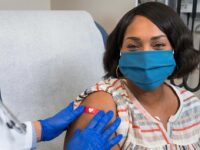In a world where the COVID-19 pandemic is still continuing to fester, trying to find clinical experience is even tougher than usual. While these positions were already competitive prior to the pandemic, safety concerns over bringing even more bodies into clinical settings make them even more elusive than before. Yet, through all this, pre-med students still have the same rigorous standards to fulfill. While medical schools have issued vague reassurances over the obvious lack of shadowing and clinical opportunities during this “trying” time, pre-med students do as pre-med students always do: fret and worry over the state of their upcoming applications. I myself worried over the lack of shadowing experience I’d had.
That was how I found myself standing awkwardly outside the door of an MS Clinic at my town’s local hospital, awaiting the arrival of Dr. Christopher Langston, the neurologist I was slated to shadow for the next few months that summer. I had never met him before aside from our brief conversations over text, and I was far from an expert on MS, but as I feverishly Googled the abbreviation while waiting, I familiarized myself with the basics. MS, or multiple sclerosis, is a disease in which the immune system begins to attack the central nervous system as if it were a pathogenic invader. More specifically, the immune system goes after the myelin sheath that coats nerve fibers — think of it like the insulation that covers electrical wires. This nerve damage can cause a host of issues, many of which I would see firsthand within the next few months: things like numbness, weakness, tremors, difficulty walking, and impaired vision. Prior to my shadowing experience, MS was like this specter in the back of my mind. I’d always heard about it and it sounded scary, but I’d never seen it up close and I didn’t exactly know what it was. Whether I realized it at the time or not, I would soon become intimately acquainted with its pathogenesis.
On a typical day of shadowing, my routine started early. I would usually arrive at the hospital ahead of the clinic’s 8 a.m. opening time. More often than not I’d get there before Dr. Langston, so I would sit in the waiting area until his arrival. Once he arrived, he would take me through a rundown of the day’s appointments, and then I would observe as he met with patients. After the first few appointments, if he had a break in the schedule, we would walk to the cafeteria to get coffee. As we went, I’d pepper him with questions about medical school, residency, and MS. Since I was simultaneously taking biochemistry over the summer, he’d often inquire about how my studying was going. Next we would return to the office and continue seeing patients, me furiously taking notes all the while. At a certain point, I would have to gracefully duck out of the appointment we were in and run home in time to catch my biochemistry lecture. It was a hectic routine, but starting my day off by spending time with a doctor actually did wonders for my motivation by the time I logged onto my Zoom class. It reminded me of what I’m working towards.
Unfortunately for MS patients, getting protection against COVID is not as simple as getting the vaccine. Because of their immunosuppressive medications, their bodies do not always produce the antibodies after receiving the injection.
I also learned a lot about the problems that have arisen when COVID-19 intersects with MS. MS patients are considered immunocompromised, as the medications that slow symptom progression effectively suppress the immune system. As such, contracting even a mild infection or virus can be disastrous. Among a slew of questions about symptoms, MRIs, and medication, Dr. Langtson regularly inquired about whether his patients had received the vaccine yet. Many of them had, but unfortunately for MS patients, getting protection against COVID is not as simple as getting the vaccine. Because of their immunosuppressive medications, their bodies do not always produce the antibodies after receiving the injection. One of his patients only made the antibodies after trying the Moderna, Pfizer, and Johnson & Johnson vaccines. For other patients, even that might not be sufficient. As much as I, and many others, complained about how sick we got after receiving the second dose, I felt grateful that it even worked at all. I couldn’t imagine having to go through that three times, only to have it ultimately fail.
Something that also continues to fascinate me about treating MS patients is just how wide the spectrum of disease progression truly is. We would go from one patient who was young, active, and mobile — doing CrossFit regularly or even expecting their first child — to someone who used a wheelchair and required assistance for even the most basic of activities. It was frankly startling to witness how people were impacted at various stages of the disease. Regardless of the discussion or patient at hand, Dr. Langston somehow always maintained his friendly and optimistic demeanor. It made me wonder if I would one day be capable of maintaining such composure while continuously seeing people and their families devastated by a disease that has no cure.
The appointments where we were seeing new patients would sometimes be the hardest for this very reason. The regular patients had some time to process the situation they were in and enact plans and precautions to prevent falls, monitor their neurological systems, and slow progression. New patients still had hope that whatever was wrong with them might be something else. But even patients who did not qualify for a diagnosis of MS suffered, albeit in a different way. I often winced internally when Dr. Langston would deliver the unfortunately cryptic news that though they did not currently qualify for an MS diagnosis, he also couldn’t say they didn’t have it. In some ways, I think patients actually preferred having a label to having nothing at all. A label has a specific treatment protocol, and a national website you can read for information and news about cutting-edge research. Being in that gray zone comes with none of those perks.
A label has a specific treatment protocol, and a national website you can read for information and news about cutting-edge research. Being in that gray zone comes with none of those perks.
Dr. Langston often regaled me with various anecdotes, both from his residency and from other colleagues’. One day he told me about a young doctor in her residency who found out she had MS. I have long heard horror stories about residency, the time after graduating medical school but before becoming a fully independent physician. I knew it meant long hours, little time off, and contrary to what many people believe, little pay for the hours and education put in. I couldn’t imagine going through all of that only to find out you have a potentially devastating disease — a disease you’d probably read about in textbooks and seen in lecture slides and in clinical rotations. It was a grave reminder of the fragile barrier that separates doctor and patient. Even if I do get through the laborious applications and get all the experience I need and survive the monstrosity that is the MCAT, at any point I could go from the one in the white coat to the one in the hospital bed. My shadowing experience was an important reminder that even doctors, who are often so revered by society and seen as having a god-like status, cannot always stop the diseases that plague their patients, or even the ones that may be lurking in their own bodies.






